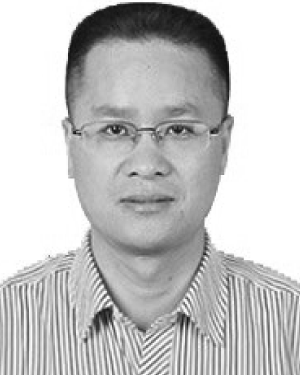Based on the designed infrared dataset, the Inversion and CLAHE data enhancement operations are used for channel expansion. Using the model that is trained by CEAM-YOLOv7...
Abstract:
Driver distraction behavior is prone to induce traffic accidents. Therefore, it is necessary to detect it to caution drivers in time for traffic safety. In driver behavio...Show MoreMetadata
Abstract:
Driver distraction behavior is prone to induce traffic accidents. Therefore, it is necessary to detect it to caution drivers in time for traffic safety. In driver behavior recognition, the diversity of behaviors and driving environment can have a certain effect on detection accuracy, and most of the existing methods have serious information loss. These make it challenging to improve the real-time accuracy of driver distraction behavior. In this paper, we propose an improved YOLOv7 based on the channel expansion and attention mechanism for driver distraction behavior detection, named CEAM-YOLOv7. The global attention mechanism (GAM) module focuses on key information to improve accuracy. By inserting GAM into the Backbone and Head of YOLOv7, the global dimensional interaction features are scaled up, enabling the network to extract key features. Furthermore, In the CEAM-YOLOv7 architecture, the convolution computation has been significantly simplified, which is conducive to increasing the detection speed. Combined with the Inversion and contrast limited adaptive histogram equalization (CLAHE) image enhancement algorithm, a channel expansion (CE) algorithm for data augmentation is presented to further optimize the detection effect of infrared (IR) images. On the driver distraction IR dataset of Hunan University of Science and Technology (HNUST) and Hunan University (HNU), the verification results show that CEAM-YOLOv7 achieves a 20.26% higher mAP compared to the original YOLOv7 model and the FPS reaches 156, which illustrate that CEAM-YOLOv7 outperforms state-of-the-art methods in both accuracy and speed.
Based on the designed infrared dataset, the Inversion and CLAHE data enhancement operations are used for channel expansion. Using the model that is trained by CEAM-YOLOv7...
Published in: IEEE Access ( Volume: 10)
Funding Agency:

School of Physics and Electronic Science, Hunan University of Science and Technology, Xiangtan, China
Key Laboratory of Intelligent Sensors and Advanced Sensing Materials of Hunan Province, Hunan University of Science and Technology, Xiangtan, China
Shugang Liu received the B.Sc. degree in electronic information engineering from Hunan University, Changsha, China, in 2000, and the M.Sc. degree in software engineering from the Beijing University of Technology, Beijing, China, in 2005, and the Ph.D. degree in electronic science and technology from Hunan University, Changsha, in 2011. He is currently a Senior Lecturer with the Hunan University of Science and Technology. ...Show More
Shugang Liu received the B.Sc. degree in electronic information engineering from Hunan University, Changsha, China, in 2000, and the M.Sc. degree in software engineering from the Beijing University of Technology, Beijing, China, in 2005, and the Ph.D. degree in electronic science and technology from Hunan University, Changsha, in 2011. He is currently a Senior Lecturer with the Hunan University of Science and Technology. ...View more

School of Physics and Electronic Science, Hunan University of Science and Technology, Xiangtan, China
Key Laboratory of Intelligent Sensors and Advanced Sensing Materials of Hunan Province, Hunan University of Science and Technology, Xiangtan, China
Yujie Wang received the B.Eng. degree in measurement and control technology and instrument from the Hunan University of Science and Technology, Xiangtan, China, in 2021. He is currently pursuing the master’s degree with the School of Physics and Electronic Science, Hunan University of Science and Technology. His research interests include deep learning and embedded systems.
Yujie Wang received the B.Eng. degree in measurement and control technology and instrument from the Hunan University of Science and Technology, Xiangtan, China, in 2021. He is currently pursuing the master’s degree with the School of Physics and Electronic Science, Hunan University of Science and Technology. His research interests include deep learning and embedded systems.View more

School of Electronic Information, Huzhou College, Huzhou, China
Qiangguo Yu received the B.Sc. degree in electronic information engineering from Hunan University, Changsha, China, in 2000, and the M.Sc. degree in software engineering from Central South University, Changsha, in 2016. Since 2020, he has been with the Huzhou College, where he is currently a Senior Engineer. His current research interests include intelligent control and pattern recognition.
Qiangguo Yu received the B.Sc. degree in electronic information engineering from Hunan University, Changsha, China, in 2000, and the M.Sc. degree in software engineering from Central South University, Changsha, in 2016. Since 2020, he has been with the Huzhou College, where he is currently a Senior Engineer. His current research interests include intelligent control and pattern recognition.View more

College of Electrical and Information Engineering, Hunan University, Changsha, China
Hongli Liu (Member, IEEE) received the B.Sc. degree in electrical engineering and the Ph.D. degree in control theory and engineering from Hunan University, Changsha, China, in 1985 and 2000, respectively. He is currently a Professor and the Department Head of the College of Electrical and Information Engineering, Hunan University. His research interests include intelligent information processing and transmission technolog...Show More
Hongli Liu (Member, IEEE) received the B.Sc. degree in electrical engineering and the Ph.D. degree in control theory and engineering from Hunan University, Changsha, China, in 1985 and 2000, respectively. He is currently a Professor and the Department Head of the College of Electrical and Information Engineering, Hunan University. His research interests include intelligent information processing and transmission technolog...View more

School of Physics and Electronic Science, Hunan University of Science and Technology, Xiangtan, China
Key Laboratory of Intelligent Sensors and Advanced Sensing Materials of Hunan Province, Hunan University of Science and Technology, Xiangtan, China
Zhan Peng received the B.Eng. degree in electronic information science and technology from the Hunan University of Science and Technology, Xiangtan, China, in 2022. She is currently pursuing the master’s degree with the School of Physics and Electronic Science, Hunan University of Science and Technology. Her research interest includes semantic communication.
Zhan Peng received the B.Eng. degree in electronic information science and technology from the Hunan University of Science and Technology, Xiangtan, China, in 2022. She is currently pursuing the master’s degree with the School of Physics and Electronic Science, Hunan University of Science and Technology. Her research interest includes semantic communication.View more

School of Physics and Electronic Science, Hunan University of Science and Technology, Xiangtan, China
Key Laboratory of Intelligent Sensors and Advanced Sensing Materials of Hunan Province, Hunan University of Science and Technology, Xiangtan, China
Shugang Liu received the B.Sc. degree in electronic information engineering from Hunan University, Changsha, China, in 2000, and the M.Sc. degree in software engineering from the Beijing University of Technology, Beijing, China, in 2005, and the Ph.D. degree in electronic science and technology from Hunan University, Changsha, in 2011. He is currently a Senior Lecturer with the Hunan University of Science and Technology. His research interests include deep learning, semantic communication, and embedded systems.
Shugang Liu received the B.Sc. degree in electronic information engineering from Hunan University, Changsha, China, in 2000, and the M.Sc. degree in software engineering from the Beijing University of Technology, Beijing, China, in 2005, and the Ph.D. degree in electronic science and technology from Hunan University, Changsha, in 2011. He is currently a Senior Lecturer with the Hunan University of Science and Technology. His research interests include deep learning, semantic communication, and embedded systems.View more

School of Physics and Electronic Science, Hunan University of Science and Technology, Xiangtan, China
Key Laboratory of Intelligent Sensors and Advanced Sensing Materials of Hunan Province, Hunan University of Science and Technology, Xiangtan, China
Yujie Wang received the B.Eng. degree in measurement and control technology and instrument from the Hunan University of Science and Technology, Xiangtan, China, in 2021. He is currently pursuing the master’s degree with the School of Physics and Electronic Science, Hunan University of Science and Technology. His research interests include deep learning and embedded systems.
Yujie Wang received the B.Eng. degree in measurement and control technology and instrument from the Hunan University of Science and Technology, Xiangtan, China, in 2021. He is currently pursuing the master’s degree with the School of Physics and Electronic Science, Hunan University of Science and Technology. His research interests include deep learning and embedded systems.View more

School of Electronic Information, Huzhou College, Huzhou, China
Qiangguo Yu received the B.Sc. degree in electronic information engineering from Hunan University, Changsha, China, in 2000, and the M.Sc. degree in software engineering from Central South University, Changsha, in 2016. Since 2020, he has been with the Huzhou College, where he is currently a Senior Engineer. His current research interests include intelligent control and pattern recognition.
Qiangguo Yu received the B.Sc. degree in electronic information engineering from Hunan University, Changsha, China, in 2000, and the M.Sc. degree in software engineering from Central South University, Changsha, in 2016. Since 2020, he has been with the Huzhou College, where he is currently a Senior Engineer. His current research interests include intelligent control and pattern recognition.View more

College of Electrical and Information Engineering, Hunan University, Changsha, China
Hongli Liu (Member, IEEE) received the B.Sc. degree in electrical engineering and the Ph.D. degree in control theory and engineering from Hunan University, Changsha, China, in 1985 and 2000, respectively. He is currently a Professor and the Department Head of the College of Electrical and Information Engineering, Hunan University. His research interests include intelligent information processing and transmission technology.
Hongli Liu (Member, IEEE) received the B.Sc. degree in electrical engineering and the Ph.D. degree in control theory and engineering from Hunan University, Changsha, China, in 1985 and 2000, respectively. He is currently a Professor and the Department Head of the College of Electrical and Information Engineering, Hunan University. His research interests include intelligent information processing and transmission technology.View more

School of Physics and Electronic Science, Hunan University of Science and Technology, Xiangtan, China
Key Laboratory of Intelligent Sensors and Advanced Sensing Materials of Hunan Province, Hunan University of Science and Technology, Xiangtan, China
Zhan Peng received the B.Eng. degree in electronic information science and technology from the Hunan University of Science and Technology, Xiangtan, China, in 2022. She is currently pursuing the master’s degree with the School of Physics and Electronic Science, Hunan University of Science and Technology. Her research interest includes semantic communication.
Zhan Peng received the B.Eng. degree in electronic information science and technology from the Hunan University of Science and Technology, Xiangtan, China, in 2022. She is currently pursuing the master’s degree with the School of Physics and Electronic Science, Hunan University of Science and Technology. Her research interest includes semantic communication.View more

